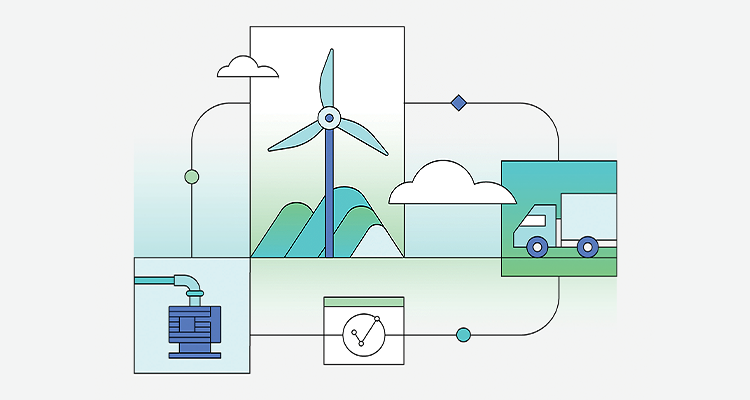AI technology paired with condition-based maintenance can keep factory assets operating at peak performance. By Scott Campbell
In the manufacturing sector, rapid change is the default. Manufacturers must contend with unpredictable supply chains, volatile market trends, and shifting regulations.
Amid this change, there’s one crucial constant: the importance of maintenance. How well a factory floor’s assets perform impacts every other part of the business. If a welding machine or conveyor system goes down unexpectedly, everything from production and inventory management to sustainability progress can be thrown into disarray. 
It is no surprise, then, that asset maintenance has become a science in manufacturing. There are a variety of maintenance tactics, tools, and technologies to choose from – all of which can be mixed and matched in countless permutations.
One of the most potent pairings available to manufacturers today is condition-based maintenance (CBM) and artificial intelligence (AI). Together, they create a 1 + 1 = 3 effect, deepening maintenance insights and accelerating productivity. Yet many manufacturers aren’t fully leveraging this synergy, forfeiting coveted insights and productivity.
Understanding condition-based maintenance (CBM)
CBM isn’t a new maintenance strategy, but it is constantly being refined. At its core, CBM is about collecting asset data to determine when maintenance is necessary, rather than relying on predetermined maintenance defined by time or usage. Asset data might include temperature, vibration frequencies, oil acidity, pressure, or power quality.
This data informs metrics like p-f intervals and p-f curves, which allow technicians to determine if and how an issue will result in asset failure, and how long they have to perform maintenance. (The p stands for ‘performance’ and the f for ‘failure’).
Understanding artificial intelligence (AI)
Like CBM, AI for maintenance isn’t a novel concept. Manufacturers have been leveraging AI-powered technologies like computer vision and machine learning for years. But AI is advancing at lightning speed and relying on maintenance software from just a few years ago can cost businesses dearly.
A handful of AI technologies in particular are increasingly showing up on the factory floor. Machine learning excels at parsing vast data sets and detecting patterns and anomalies. Meanwhile, generative AI doesn’t just analyze data but also generates new outputs. Generative AI leapt into the public conversation with the introduction of consumer-facing chatbots earlier this decade, and enterprise versions of the technology are just as impressive.
The most cutting-edge branch of AI is agentic AI. AI agents can autonomously pursue complex goals, initiate workflows, and leverage other software. AI agents can deliver deeper insights than machine learning and more sophisticated automation than other generative AI tools like chatbots or assistants.
 Combining CBM and AI
Combining CBM and AI
So how do CBM and AI create a whole greater than the sum of their parts? The factory floor offers a variety of real – not just theoretical – use cases.
Machine learning empowers maintenance teams to analyze all that temperature, vibration, oil, and other CBM data in detail and at scale. As a result, manufacturers can know the condition of every factory pump and motor at any given time – and also know exactly when a technician needs to open their toolbox and get to work.
Meanwhile, generative AI vastly simplifies the process of getting that technician to the right place. Often, the administrative work associated with maintenance is more time intensive than the actual repairs; Work orders need to be filled out, failure codes need to be looked up. Generative AI can automate much of this, drawing on historical data to analyze an issue, suggest a failure code, and help fill out the necessary paperwork. Generative AI can also be utilized for Failure Mode and Effects Analysis (FMEA), the important process of fully understanding potential component failures and assessing their larger impact. Generative AI allows FMEAs to be quickly created, customized and automated for specific asset classes, drastically boosting reliability engineers’ productivity.
Agentic AI takes these processes to the next level. Some manufacturers are already experimenting with AI agents that analyze asset data, conduct a root cause analysis, determine the best course of maintenance, and then initiate a work order – all with limited human supervision. Agentic AI will compound the productivity gains and cost savings that machine learning and generative AI already provide.
Maintenance will always be a constant in the manufacturing world. But by coupling CBM and AI, manufacturers can create another constant: reliable and automated insights that simultaneously reduce maintenance costs and improve manufacturing production.
Scott Campbell
Scott Campbell is Global Leader, Product Management ESG & Asset Management at IBM. IBM is a leading provider of global hybrid cloud and AI, and consulting expertise. IBM helps clients in more than 175 countries capitalize on insights from their data, streamline business processes, reduce costs and gain the competitive edge in their industries.

 Combining CBM and AI
Combining CBM and AI